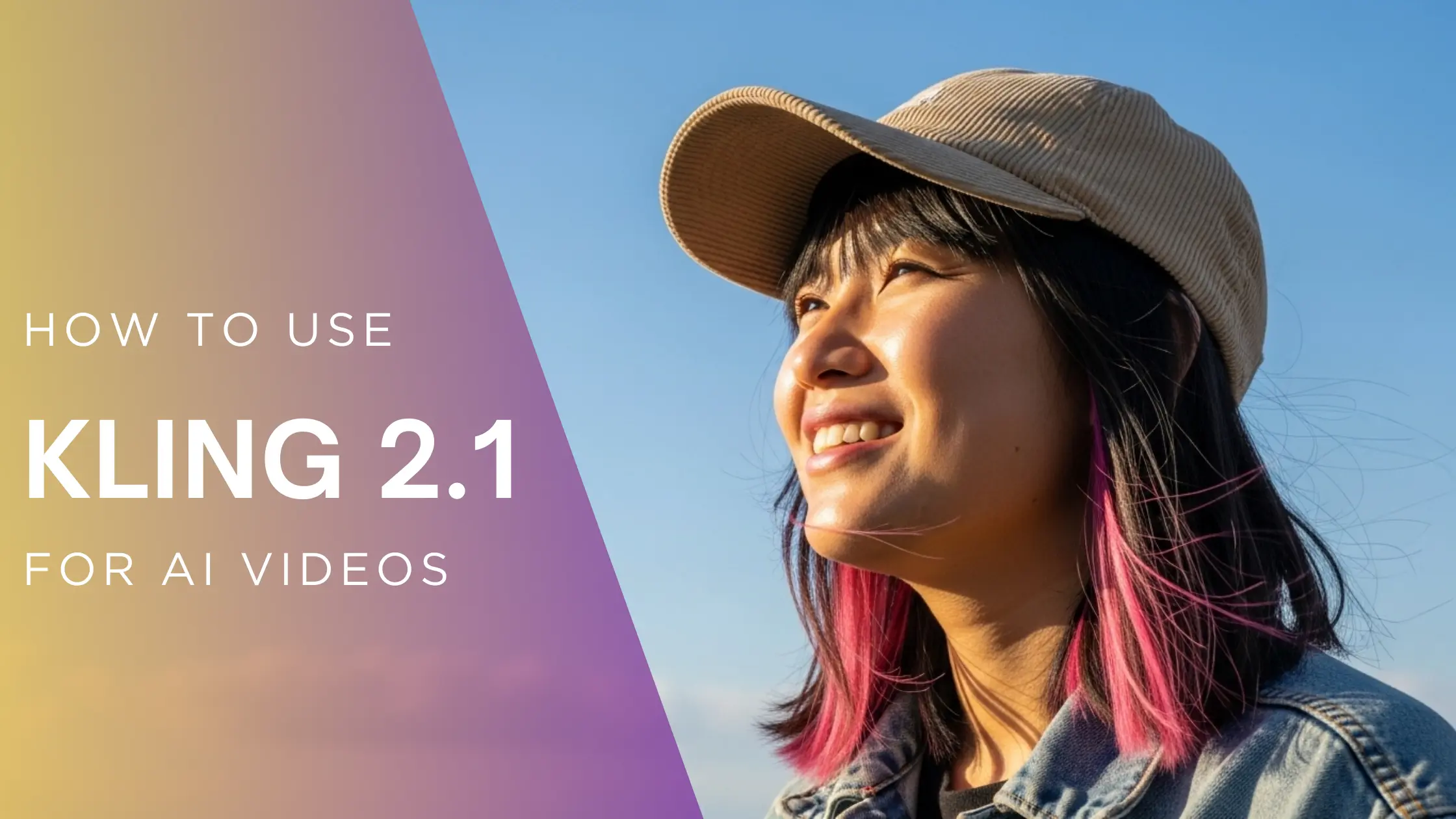

Sameer Sohail
Thu Aug 28 2025
5 mins Read
Kling 2.1, developed by Kuaishou, has become a leading AI video generation model, enabling users to turn static images into dynamic and cinematic videos. Whether you're a content creator, marketer, or educator, Kling 2.1 offers an intuitive platform to bring your ideas to life with seamless, high-quality video outputs.
Capabilities of Kling 2.1
Kling 2.1 offers several advanced features, making it an exceptional tool for video creation. Here’s what sets it apart:
High-Resolution Outputs:
Kling 2.1 supports high-definition video outputs, offering both 720p resolution for standard usage and 1080p for professional-grade quality. This ensures that the generated videos are clear, sharp, and ideal for both web and broadcast use. Whether you're crafting quick social media clips or longer cinematic content, Kling 2.1 provides a versatile output range to suit your needs.
Advanced Motion Dynamics:
One of the standout features of Kling 2.1 is its 3D spatiotemporal attention mechanisms, which simulate realistic movements and camera transitions. This allows the AI to create lifelike animations that mirror human-like fluidity in motion, making your videos appear highly professional. The AI adapts to your prompts, adjusting the intensity and fluidity of movements based on the scene requirements.
Enhanced Facial Expressions:
Kling 2.1 excels at animating facial expressions. The AI recognizes subtle details, from slight shifts in the eyes to broader expressions, ensuring that characters in the generated videos appear more realistic and engaging. This feature is especially beneficial for creating videos that require emotional depth or storytelling through facial cues.
Flexible Video Lengths:
Kling 2.1 allows for video lengths ranging from just 5 seconds to 10 seconds, making it versatile for different use cases. Whether you need a quick, attention-grabbing clip or a more extended scene for detailed storytelling, Kling 2.1 can accommodate your project’s requirements. The ability to adjust the length ensures you can tailor the video to your specific needs.
How to Use Kling 2.1
Using Kling 2.1 is a straightforward process, designed for ease of use without sacrificing control over the creative process. Here’s a step-by-step guide to get started:"
-
Access the Platform : First, access Kling 2.1 through a platform like ImagineArt or other integrated services. These platforms offer direct access to the model with a user-friendly interface.
-
Select the Model: Choose from the available Kling 2.1 versions: Standard, Pro, or Master. The Standard version is suitable for basic video generation needs, while Pro and Master versions offer higher resolutions (up to 1080p) and additional features like watermark removal and extended video durations.
-
Upload Your Image: Upload a high-quality reference image to serve as the starting frame for your video. This image is crucial as it defines the visual foundation of your video. The more detailed and high-quality your reference image is, the better the generated video will be.
-
Enter a Prompt: Craft a detailed prompt describing the type of motion, scene, or narrative you want the AI to create. The more specific you are with your descriptions, the more accurately Kling 2.1 will generate your video. You can specify camera angles, character movements, lighting effects, and even emotional expressions.
-
Adjust Settings: Customize the settings based on your project’s needs. You can tweak the video’s aspect ratio, choose camera movements, set the video length, and adjust other variables like the style of motion or transitions.
-
Generate the Video: Once you've fine-tuned your settings and prompts, click the "Generate" button. Kling 2.1 will process the input and generate a video that meets your specifications. Depending on the complexity, this might take a few seconds to a minute.
How to Get the Right Results
To achieve the best possible outcomes with Kling 2.1, consider these tips to fine-tune your videos:
-
Use High-Quality Images: The quality of your reference image is directly correlated with the quality of the generated video. Ensure that the image is well-lit, in focus, and free from noise. A high-resolution image with clear subject details will help the AI create a more detailed and accurate animation.
-
Craft Detailed Prompts: The key to getting the right video lies in how well you describe your desired result. Be specific about motion, environment, and camera angles. For example, if you want a video of a character walking through a city street, mention the type of movement (casual walk, brisk pace, etc.), the surrounding environment (busy street, nighttime, city lights), and any specific emotions or facial expressions the character should display.
-
Experiment with Settings: Don’t hesitate to experiment with the available settings. Adjusting the camera angle, lighting, and video length can significantly affect the final result. Try different combinations to see what works best for your project. If you’re creating a dynamic action scene, you might want to focus on faster transitions and unique camera angles to add excitement.
-
Iterate and Refine: Sometimes, the first video might not be exactly what you envisioned. Generate multiple versions and tweak the prompts or settings as needed. Refining the video through several iterations will help you achieve the exact visual style and narrative you’re aiming for.
Accessing Kling 2.1 through ImagineArt and Its Unique USPs
ImagineArt offers seamless access to Kling 2.1, along with a number of other top AI models, providing an efficient platform for video generation at affordable plans.
-
Credit-Based System: ImagineArt operates on a credit-based system, allowing you to purchase credits as needed. This flexible system ensures that you only pay for what you use, making it cost-effective for both small projects and large-scale video productions.
-
Multiple Kling Versions: Depending on your needs, ImagineArt offers access to both versions of Kling 2.1, Standard (SD) and Pro. Standard version consumes less credits, while the Pro version consumes slightly higher credits but offers better quality and prompt adherence.
-
Predefined Styles, Effects, and Customization: ImagineArt has a plethora of preset effects and art styles that you can apply to your generations. It also offers different lighting options and camera motions. Moreover, you can also set the aspect ratio of your video according to your choice, including 1:1, 4:3, 16:9, etc.
-
Prompt Enhancer: ImagineArt’s AI video generator has a built-in prompt enhancer that you can turn on to drive better outputs. It rewrites your prompt in a way that makes it easier for the AI model to interpret. On top of that, the Imagine Bot assistant can help you write prompts from scratch, once you describe your rough idea to it.
By leveraging ImagineArt’s platform, users can harness the full potential of Kling 2.1, creating high-quality AI-generated videos that boost their content creation processes.
Conclusion
Kling 2.1 is a powerful AI video generator that enables creators to produce high-quality videos with ease, featuring advanced motion dynamics, facial expression rendering, and high-resolution output. Accessed through ImagineArt, it unlocks endless creative possibilities for cinematic and social media video production.

Sameer Sohail
Sameer Sohail specializes in content marketing for GenAI and SaaS companies, helping them grow with strong writing and strategy.